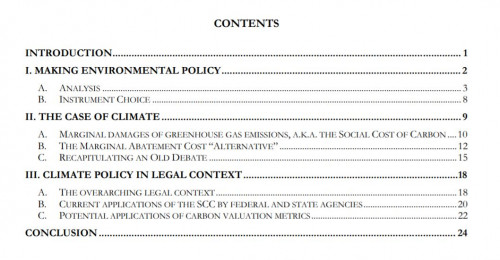In the United States the primary tool to value greenhouse gas emissions reductions in cost-benefit analysis is the social cost of carbon (SCC), which is a metric that estimates, in monetary terms, the damages associated with climate change. Recently, some prominent public policy experts and scholars have proposed that a “marginal abatement cost” (MAC) could be used as an alternative to the SCC. Indeed, some jurisdictions, such as the U.K., have integrated MAC-based approaches into climate policymaking. This article provides conceptual clarity about these metrics, focusing on how a MAC-based threshold could sensibly be used in climate policy, and explaining why it is not a substitute for the SCC. The article relates the current conversation about valuing greenhouse gas emissions to the longstanding debate over the use of prices versus quantities in climate policy formulation and the more generic regulatory question of when it is appropriate to employ cost-benefit analysis versus cost-effectiveness analysis. In addition, the article uses illustrative hypothetical policy contexts to explain the roles that these tools should play.

